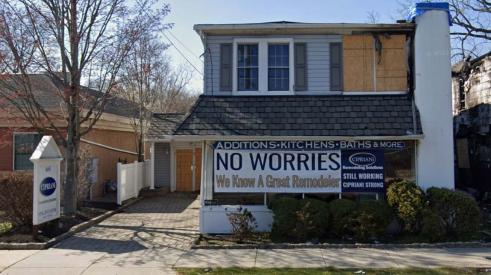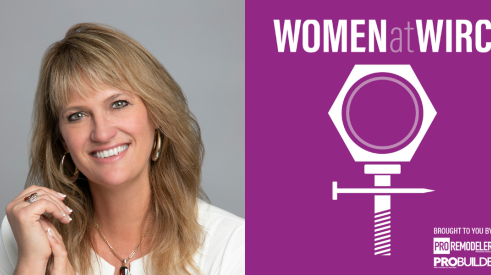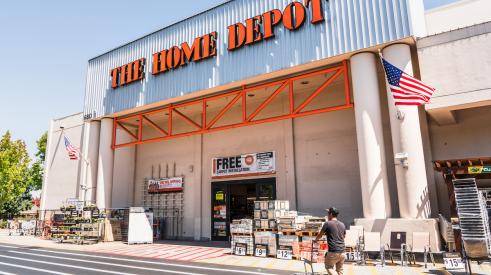A Maryland contractor admits he got sweet talked into switching suppliers when a distributor trying to win his business offered windows at around $220 per unit. He was still feeling good about that when, a few months later, he happened to scrutinize his supply house invoice and realized that, unbeknownst to him, he was now being charged about 20 percent more for those same windows.
“It’s price creep,” he says. “You always have to keep your eye on it.” He ended up taking his business back to the original supplier, who may not have been the least expensive distributor of building materials but would at least inform customers when and by how much prices were being raised.
A Creeping Sensation
Price creep is endemic. Not so long ago a pound of coffee was a pound of coffee. How did it become 12 ounces? Answer: gradually. The price stayed about the same but little by little you end paying that amount for 25 percent less product. Rather than raise the retail price, manufacturers reduced the quantity in a package and figured that the consumer would simply buy more, which is usually what happens. That’s just one of the myriad forms price creep takes.
One website for investors defines price creep as “a gradual increase in the cost of a good or service,” which occurs because “production costs have increased.” The Sourcing Industry Group calls it “increased costs associated from changes that occur when a good or service has not been properly specified.”
In residential construction, it happens in a number of ways. The prices of some building materials go up every year, some may fluctuate seasonally, some go up semi-annually or quarterly, depending on raw materials pricing (such as asphalt, a petroleum by-product that is a key ingredient in shingles). Commodity products, such as OSB, gypsum wall board, and concrete are particularly volatile, rising or falling in response to supply and demand.
And when they go up, they sometimes go up a lot. For example, NAHB economists note that in 2016 the costs of softwood lumber, OSB, ready-mix concrete, and gypsum products “all posted price changes … well above the 1.3 percent average for the Consumer Price Index” (a weighted measure of price changes in consumer goods and services). What’s "well above?" OSB prices rose 13.8 percent and softwood lumber prices went up by 8.7 percent.
Your Time and Price Dilemma
Let’s say that last June you gave a homeowner a proposal totaling $15,000 for a roof replacement that involved some framing and sheathing work. You wait for the go-ahead to get started but the call never comes. This morning the phone rings and that same homeowner is ready to send over the signed contract and is asking when can you add him to your schedule. He or she assumes that the price is still $15,000. But is it?
Not unless you want to do the job for little or no profit. By way of example, assume that your material costs on that job were $3,500. Chances are that price increases—anywhere from 3 percent to 7 percent—for shingles and plywood sheathing will put your current material costs at somewhere between $4,000 and $4,500. (You can get price alerts at sites like Allied Building Products.) If you were planning to net 10 percent on that $15,000 job, half of it just went away. And will your excellent and much-in-demand subcontractor installer agree to charge you the same price for labor this year as last? Probably not.
Material price increases are a constant. A post by Leo the Roofer, a Bellingham, Mass., blogger who posts on RooofCalc.org, weighs in on the subject: “As a roofing contractor, I’ve been amazed and frustrated with the fact that for the last 10 years the cost of roofing materials continues to rise.” He cites examples:
- Asphalt shingles, once “about $70 per square” are now “at $100 or more.”
- The metal shingles for which he paid about $250 to $275 per square in 2007 are now $350 to $400, while the GAF DeckArmor underlayment installed with them, once running $130 per 10 squares of roof now run $195 to 220.
And of course it’s not just roofing. A blog by “The Guru” for The Roofing Report notes 2017 window price increases by Ply Gem (4 percent), Jeld-Wen (6-8 percent), and MI Windows and Doors (5 percent).
Prices in Flux
Of course, if you call your homeowner to tell him that $15,000 isn’t the price of his reroof anymore, it’s possible he’ll think you’re pulling a fast one or trying to take advantage of him and will start looking for someone else to do the job. You can easily navigate such situations by, first, having a policy in your company literature and on your website stating that, because building materials prices fluctuate, a price issued on such-and-such a day is good for a certain limited period of time—30 days is common. Making people aware that materials prices aren’t set in stone will make it far easier to explain why, three years from now when you get a call from the next-door neighbor, that you can’t reroof their house for $15,000.
Secondly, make sure that your contract includes an escalation clause. That makes the buyer responsible for material price increases after a certain amount of time has transpired. With an escalation clause, your $15,000 price from a year ago would be altered, legally and by the terms of the contract, to reflect current materials pricing.
Blogger Rob Abbott, operations manager at custom home builder Village Builders, in Ontario, puts it this way: “In a contract with an escalation clause, the customer agrees to pay any price increases for specified items that occur between the signing of the contract and the start of construction. Volatile materials markets have made these clauses fairly common today. The alternative is for the contractor to inflate the contract price to cover possible increases.” And inflating the price to cover possible cost increases, of course, would bring its own set of drawbacks.
Add new comment
Related Stories
4 Steps to Prep Your Business for Contraction
How a remodeling company plans ahead for the worst of times (and the best of times)
Creating a Company Fire Drill: How to Prepare for the Worst
A disastrous fire could have been a lot worse if the business wasn’t prepared for the unexpected
The Fundamentals of Growing Profitably
On this episode of Women at WIRC podcast, Nip Tuck Remodeling Owner April Bettinger shares how she plans for her company's profitable growth
3 Things to Add to Your Construction Contract—From a Lawyer
Did you know you can add these three elements to your contracts?
Study Finds Remodelers’ Net Profits Declined
How far did net profits decline and what's influencing the drop?
The Home Depot Bets on Pros Amid Predictions of Flat Sales Growth
For the first time since 2019, The Home Depot’s revenue fell short of Wall Street’s predictions amid a general softening in the home improvement market
Indicators of a Softening Market and How to Prepare
Market conditions could be changing, but don't panic. Richardson shares ways to stay on top of market conditions and how to prepare for any potential softening down the road.
Grow Your Business Through Collaboration with Remodeling Peers
Remodeling Mastery Forums offers a unique business opportuniy for remodelers













